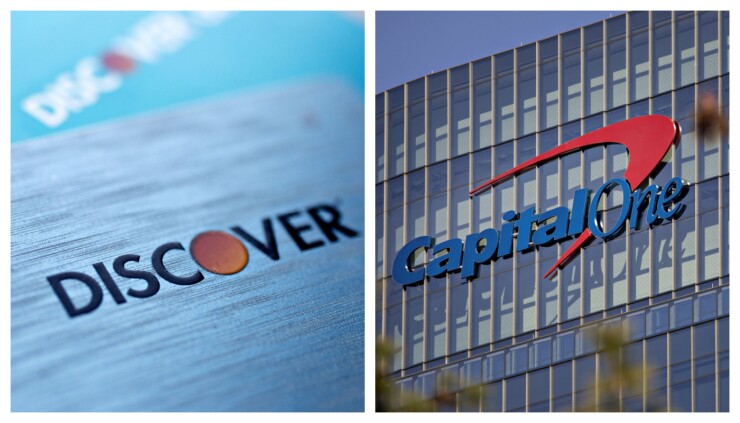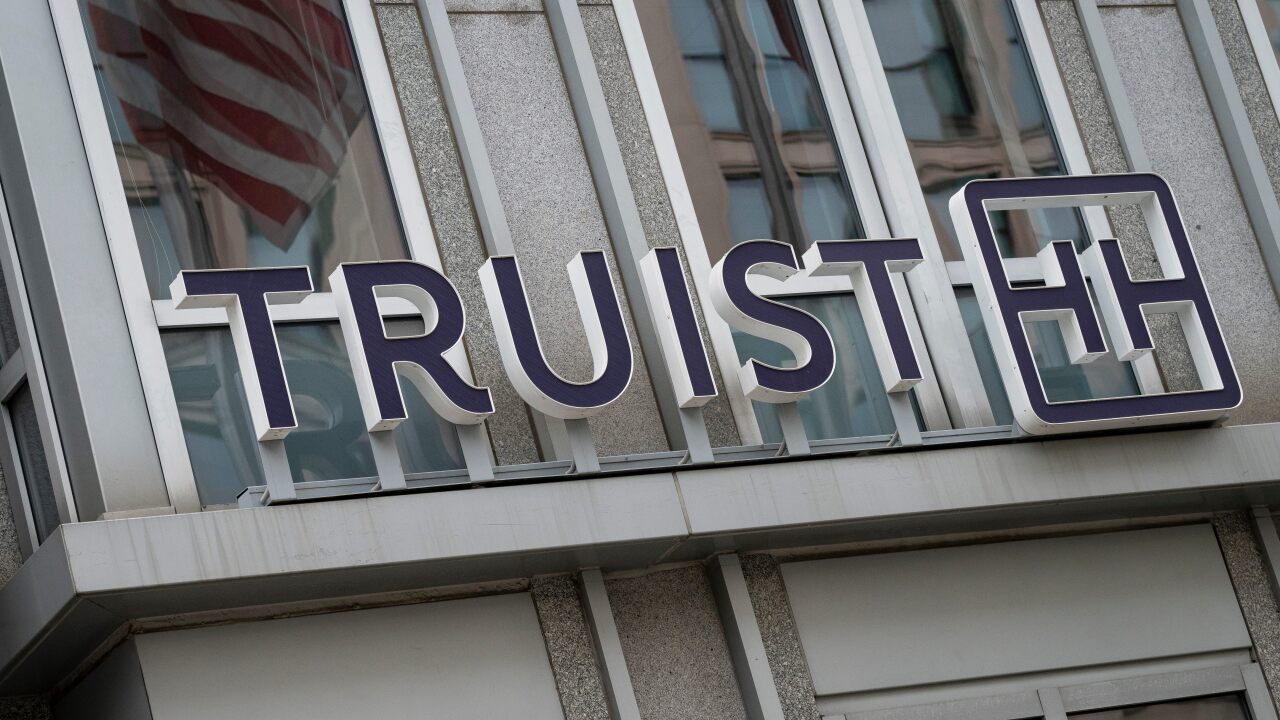
Capital One Financial has pledged hundreds of millions of dollars in community development activity, and hundreds of millions more in philanthropy, if regulators approve its
Capital One rolled out a
This total includes $575 million of donated funds and pro bono engagements, as well as $600 million in support for community development financial institutions, or CDFIs, through loans, equity investments and deposits.
The plan quickly drew pushback from advocacy groups that had already lined up in opposition to the Capital One-Discover deal.
It is common for banks looking to grow through mergers or acquisitions to release benefit plans, negotiated with community organizations, in an effort to grease the skids for regulatory approval. The Federal Reserve Board and the Office of the Comptroller of the Currency are set to hold a joint public meeting about the controversial deal on Friday.
Capital One negotiated the plan with the Woodstock Institute, the National Association for Latino Community Asset Builders, NeighborWorks America and the Opportunity Finance Network.
"This plan delivers high-impact, scalable solutions for low- and moderate-income communities, and its commitments and ambition reflect the robust, candid dialogue that drove its development," said Andres Navarrete, executive vice president and head of external affairs at Capital One, in a written statement.
"We have long valued community and customer feedback on our products, policies, and programs, recognizing that our partners are often the closest to the needs of the community, and we are deeply grateful to our negotiating partners and the many other community members and leaders across the country whose feedback and innovative ideas are reflected in this plan."
Combined with the bank's post-merger lending book for low- and moderate-income consumers and small businesses, along with its financial engagements with "diverse" suppliers, Capital One estimates the $35.3 billion acquisition will result in $265 billion of lending, investments and donations during the next five years.
Some public advocacy and market reform groups have been wary of Capital One's acquisition of Discover since it was proposed earlier this year, citing concentration concerns. With more than $600 billion of combined assets, a post-merger Capital One would be the sixth largest bank in the country and the biggest issuer of credit cards. It would also have its own payments network.
"The proposed transaction comes against the backdrop of an already very concentrated market," the advocacy group Americans for Financial Reform said in a statement. "After the merger, the four biggest credit card lenders would hold about two-thirds of outstanding credit card loans. Credit card lenders' issuers have hiked rates faster than the overall rise in interest rates in the last few years and the largest banks have led the way."
Groups that oppose the merger also highlighted Capital One's failure to meet the community benefit pledges it made ahead of its 2012 acquisition of ING Direct.
"Unfortunately, it is impossible to put any stock in promises Capital One makes," said Jesse Van Tol, president and CEO of the National Community Reinvestment Coalition, in a written statement. The NCRC frequently negotiates community benefit plans with banks but did not sign onto Capital One's latest agreement.
"They've pulled this stunt with banking regulators before, promising in 2012 to make $28.5 billion in home loans over 10 years to low- and moderate-income borrowers then bailing on mortgage loans entirely five years later having made less than half that total. That's why NCRC hasn't negotiated with Capital One: We know them to be cynical, manipulative and dishonest."
NCRC said that, unlike most banks, Capital One has a history of including credit card lending in its community impact calculations. NCRC and AFR both took issue with how the bank presented some of its figures, noting that the $44 billion of projected community financing — up from the bank's four-year total of $35 billion — is essentially the same pace of investment that the two banks were on track to make independent of the merger. According to their merger application, the two banks combined to average $8.77 billion of community development lending, investments and grants annually over the trailing four years. That figure multiplied by five totals $43.8 billion.
Capital One's community development activity has tapered in recent years as record profits — largely driven by pandemic era stimulus, ultra low interest rates and high savings rates — have waned. The bank's community development lending and investments totaled more than $9.8 billion in 2020 and more than $10.3 billion in 2021. The volume of activity dropped to roughly $8.1 billion in 2022 then $6.3 billion in 2023. In its plan, the bank notes that it would expect to deploy $35 billion over the coming five years, absent the acquisition.
Much of Capital One's proposal focuses on efforts to expand housing supply and support programs that provide down payment and closing cost assistance, as well as below-market mortgage rates. The McLean, Virginia-based bank also touted its focus on serving customers with subprime credit scores.
The plan released Wednesday calls for investments to help low- and moderate-income individuals access health care, employment, education and food, as well as public infrastructure financing. It also outlines charitable donation commitments in Delaware and Chicago — areas where Discover must be active to meet its obligations under the Community Reinvestment Act.
Capital One notes that the merger will help it expand its engagements with CDFIs from $100 million — including loans, deposits and investments made by both Capital One and Discover — to $600 million. It also plans to issue $50 million in grant funding to CDFIs.
Horacio Mendez, president and CEO of the Woodstock Institute, a Chicago-based economic development agency, said Capital One's commitments are more than just hype.
"We do not need another empty promise, a splashy marketing campaign, or re-packaging existing activity as something new," Mendez said.
"Woodstock Institute came to the table to challenge Capital One to develop a community benefits plan that moves the industry forward and sets an ambitious standard for others to follow. While nobody got everything they asked for, everyone involved in this process recognizes that substantive change and progress have been made on important issues."






